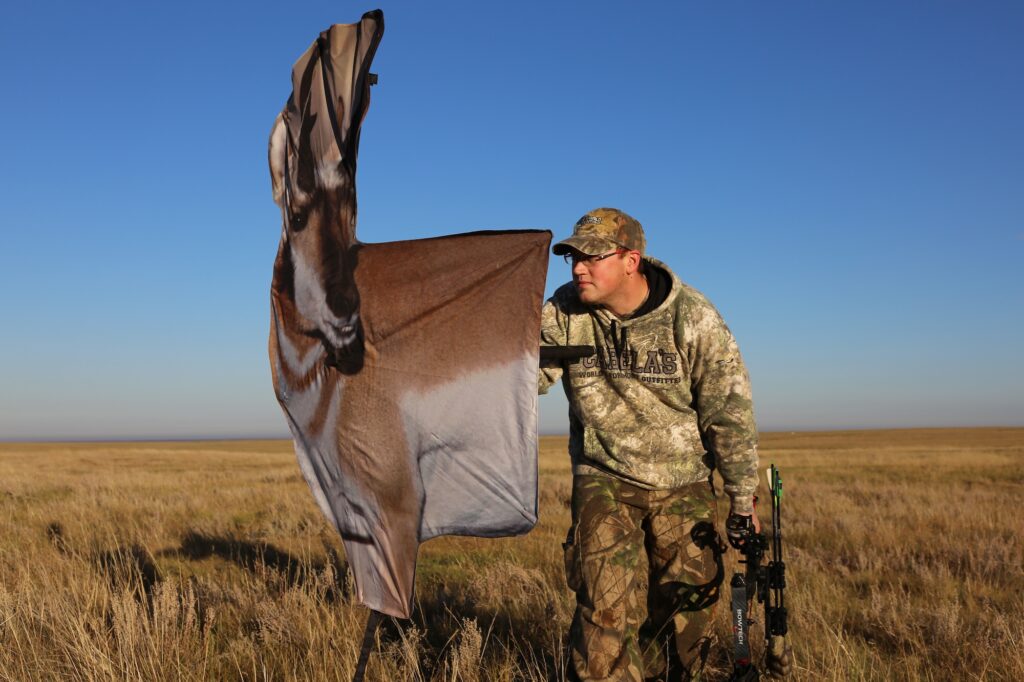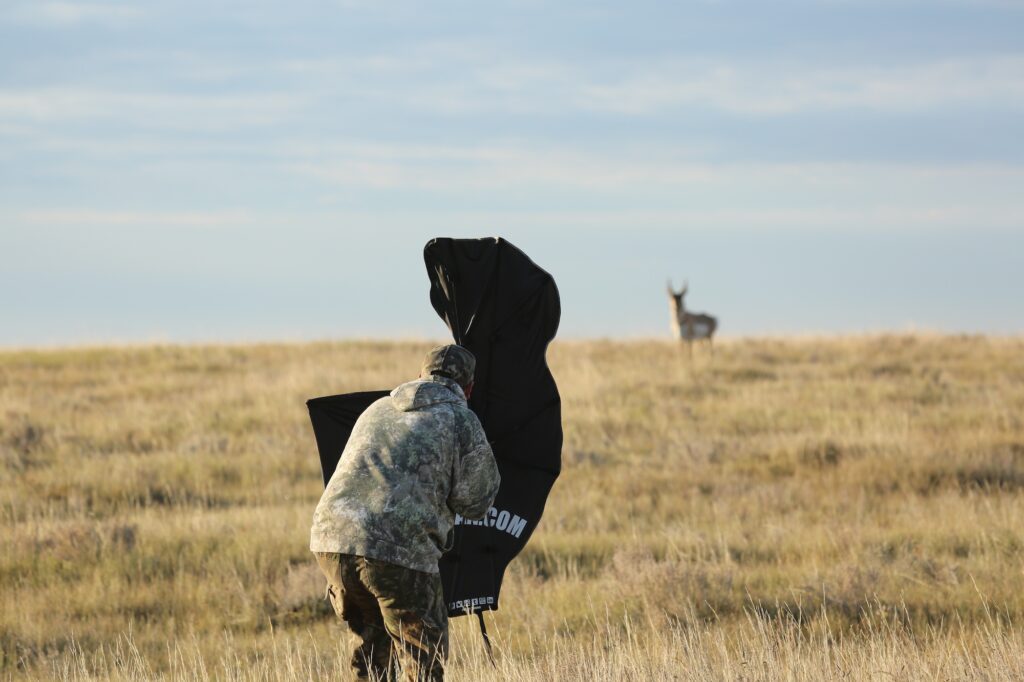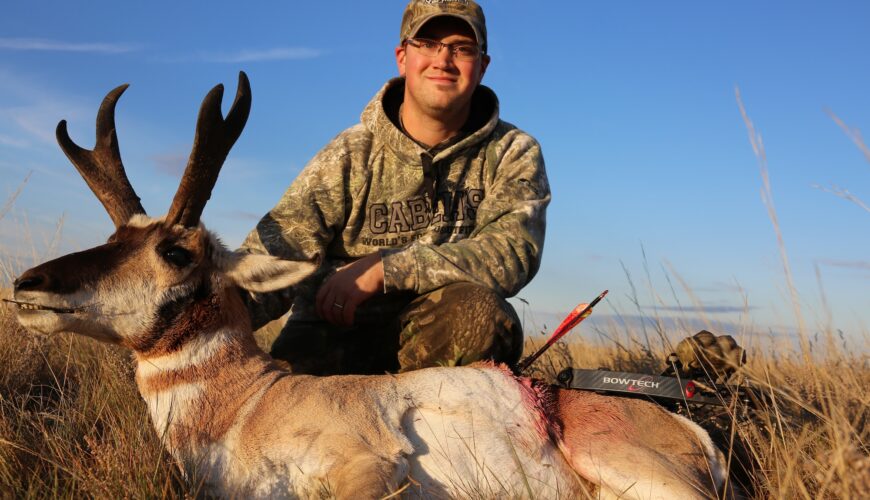Tactics
Make the Most of Early Season Deer Stands
October 6, 2025 •Doug Howlett
October 15, 2025
There’s nothing quite like spotting your first pronghorn buck of the season. The crisp prairie air, the endless horizon and the way a rutting antelope can suddenly appear like a ghost make every stalk unforgettable. On this hunt with my son, Cameron, we learned quickly that getting close with a bow is equal parts patience, persistence and reading the animal’s every move.
We hadn’t been off the highway more than a few minutes when we spotted a buck chasing a doe across an alfalfa field. Usually, I would have reminded Cam not to get excited at the first animal, but this was no ordinary antelope. His black horns cut heavy against the sky, and he was clearly a shooter. A quick visit to the landowner secured permission, and 20 minutes later, we were belly-crawling across the prairie, bow in hand and decoy at the ready.
Antelope during the rut can be territorial, and a buck decoy is often enough to trigger a charge. The plan was simple: sneak to within a 100 yards, pop up the decoy and hope his aggression would pull him in. The buck had other plans. Each time he looked our way, I expected him to march over, bristling with dominance. Instead, he chased his doe in wide circles and ignored our challenge entirely. For two hours, we shadowed him, slipping from hill to hill, always in position but never within range. When he finally drifted off with his doe, we trudged back to the truck, reminded that bowhunting often takes more patience than firepower.
Throughout the day, we stalked several more bucks, weaving through broken terrain and using the rolling prairie as cover. Each attempt ended the same way, with the herd slipping over the horizon, and no arrow launched. Still, every failed stalk taught Cam how to move quieter, how to stay low and how to anticipate an antelope’s line of travel. Those lessons are as important as any shot.

An umbrella decoy is the perfect tool to lure an old pronghorn into bow range. Brad Fenson Photo
Late in the afternoon, fortune swung back in our favor. As we hiked out of a failed stalk, we spotted the biggest buck yet, standing alone on a ridge. His horns carried heavy mass with cutters pointing skyward, and his dark face told me he was an old warrior. I pulled out a folding decoy that popped open like an umbrella, and together we crouched behind it and inched forward. The buck noticed us but kept feeding, more curious than concerned. We managed to close the distance to 70 yards, but each time we prepared for a shot, he drifted just out of range. We played cat and mouse until the sun dropped, watching him disappear over a high ridge, knowing he’d be the first buck we’d check on in the morning.
At first light, the plan paid off. The old buck reappeared on the same hill, feeding down toward us. With the umbrella decoy shielding our approach, we mimicked his feeding rhythm, stepping when he stepped, pausing when he paused. Slowly, we cut the gap to 60 yards. The buck’s body language confirmed his age and attitude. He raked sage with his horns, rubbed his face and postured like he was daring us closer. Perhaps he had been beaten by younger bucks and forced to live solitary, but he still carried himself like a king.
When he turned broadside, Cam ranged him at 60. We slid forward 10 more yards while the buck was distracted, and I whispered for Cam to use his 50-yard pin. As I steadied the decoy, he drew back, stepped out and released. The arrow flew true, disappearing behind the shoulder. The buck lunged forward in a high-speed sprint, looping back toward us before piling up just 40 yards away.
Standing over the heavy-horned antelope in the golden light of sunrise, the lesson was clear. We hadn’t had a buck charge our decoy in full rut fury, but we had stalked an old warrior into bow range by reading the land, matching his movements and keeping our patience. For Cam, it was his first archery pronghorn, and for me, it was the thrill of sharing the stalk with him. The umbrella decoy went back into storage, waiting for next season and another chance at the heart-pounding game of getting close on the open prairie.

A pronghorn begins his approach as the author’s son bides his time. Brad Fenson Photo
